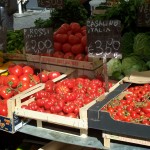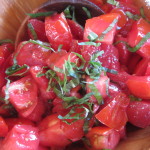Pomegranates are one of the most beautiful of winter fruits, its red jewels brighten a grey day. The health benefits of pomegranate juice are well-known and the whole fruit provides good fiber. But it’s important to know how to open a pomegranate without making a mess. There are lots of great videos on getting into the fruit without beating it and juicing it all over the kitchen counter! In this blog, I’m going to show you the easiest way to clean a pomegranate with not a drop of juice to clean up. Use the berries in a salad, to top yogurt or juice them for a healthy treat. Just don’t get it all over yourself!
Opening a pomegranate without a mess 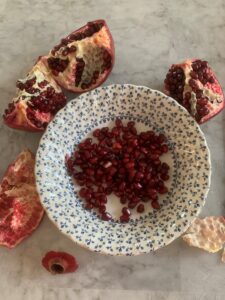
Pomegranates yield beautiful red berries. The juice is super healthy and the bright gems look beautiful on food. But opening a pomegranate to eat or juice can be a real mess. The key is to cut through the skin and access the berries, without actually cutting any of the berries themselves.
The first cut
 Using a sharp paring knife, insert the point into the base of the blossom. Make a circular cut all the way around the blossom to remove it. Be careful not to insert the knife so far in that it punctures the little red gems inside.
Using a sharp paring knife, insert the point into the base of the blossom. Make a circular cut all the way around the blossom to remove it. Be careful not to insert the knife so far in that it punctures the little red gems inside.
 The second cut
The second cut
Next, make very shallow cuts with the point of the knife to pierce the skin, but not the berries inside. Make three or four cuts down the side of the fruit so you can break the pomegranate open easily.
The next step is so simple: just break the pomegranate open, tear it into sections and carefully pull the little gems out and into a bowl. With practice you can do this whole thing with not a single drop of juice getting on you, the counter, or your clothes! Opening a pomegranate is simple!
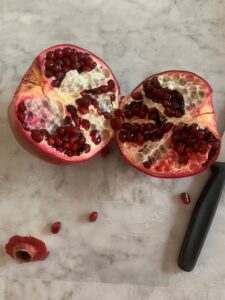

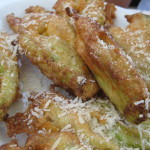
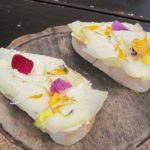



 L
L